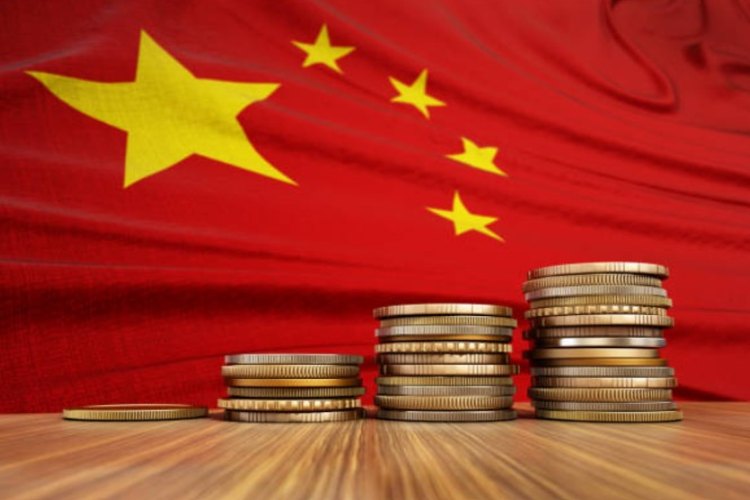India’s China FDI policy rejig: India’s foreign direct investment story has hit a troubling note. Net FDI inflows in May 2025 plunged to just $35 million — down a staggering 98% from $2.2 billion in May 2024 and 99% from $3.9 billion in April this year. The drop reflects not just weaker gross inflows but also a sharp uptick in repatriations by overseas investors. Foreign capital, once considered a relatively stable and long-term source of funding, has turned volatile. This raises critical questions about India’s attractiveness as an investment destination and the adequacy of its current policy framework.
While inbound flows have withered, outward FDI — Indian investment abroad — rose to $2.1 billion in May from $1.8 billion a year ago. These outbound investments targeted sectors like transport, storage, manufacturing, and financial services. Mauritius, the US, and the UAE were the top destinations.
READ | US tariffs windfall masks looming crisis for world economy
Meanwhile, over 75% of May’s FDI inflows came from just four countries: Singapore, Mauritius, the UAE, and the United States. On the sectoral front, manufacturing, financial services, and IT-related services were the primary beneficiaries.
Revisiting press note 3
In 2020, India tightened its FDI regime via Press Note 3, requiring prior government approval for investments from countries with which it shares a land border. While the move was justified on grounds of national security — specifically to prevent hostile Chinese takeovers during the pandemic-induced market slump — it had long-term consequences. Chinese FDI, already limited in scale, dwindled to near-zero levels.
To date, only around $4 billion in Chinese FDI has entered India over two decades—a modest sum given the size and growth of both economies.
Time for a pragmatic reassessment
The collapse in FDI has triggered a wider debate, including within government circles, about the need to reassess investment restrictions. The 2024-25 Economic Survey hinted at the need to remove bottlenecks, including those imposed on Chinese investors, to revive capital flows and strengthen India’s place in global supply chains.
India’s manufacturing ambitions—particularly in electronics and green technologies—require substantial capital and technical know-how. Chinese firms dominate many of these value chains. Excluding them outright may prove self-defeating.
Despite media reports suggesting a possible rethink, commerce minister Piyush Goyal has categorically denied any relaxation of the China-specific restrictions. He argued that even before Press Note 3, Chinese investment in India had remained negligible, and that there was no reason to expect substantial change in the future.
Yet, other arms of government appear more open. NITI Aayog recently proposed permitting Chinese investors to acquire up to a 24% stake in Indian firms without triggering the security clearance requirement. The recommendation is now under review by key ministries including finance, commerce, and external affairs.
Strategic investment or strategic risk
Allowing selective Chinese investment could bring clear gains. It would help plug financing gaps, boost local production capabilities, and send a strong signal to global investors that India remains open for business. For a country aiming to become the world’s third-largest economy by 2029 and a developed nation by 2047, capital-starved sectors such as EVs and semiconductors require deeper integration with global supply chains—many of which run through China.
In the electric mobility space, for instance, Chinese firms are global leaders. India’s climate goals — like having 30% of new vehicle sales come from EVs by 2030 — hinge on affordable access to advanced battery technologies and inputs where China dominates.
China FDI: The ‘small yard, high fence’ doctrine
India might also take cues from other countries that have navigated the challenge of Chinese capital with more nuance. The US, for instance, has adopted a sector-specific strategy — prohibiting Chinese investments in critical technologies like 5G, while allowing or reviewing others on a case-by-case basis. This is the so-called “small yard, high fence” approach: secure the core, open the rest.
India, by contrast, has treated Chinese investment with a broad-brush ban, driven largely by post-Galwan political sentiment and public opinion. While the concerns are valid, an undifferentiated blockade may not serve economic or strategic interests.
The value chain imperative
The debate ultimately boils down to India’s place in global value chains. Economic strength is less about the volume of production and more about the sophistication of components and services embedded in that output. India’s ability to produce high-value intermediate goods at scale—particularly in electronics, renewables, and precision manufacturing—remains limited.
Tapping into Chinese supply chains and capital, selectively and strategically, could help India move up the value ladder.
Conditional re-engagement already underway
In a quiet shift, India has started granting conditional approvals to firms with mainland Chinese or Hong Kong investors. These are concentrated in electronics manufacturing and come with strict terms: mandatory local value addition and bans on appointing Chinese nationals to key roles. This approach offers a middle path—leveraging capital and technology without compromising security.
India need not abandon its strategic concerns, nor should it succumb to investment desperation. But in a global environment of shrinking capital availability and heightened geopolitical flux, a rigid stance could prove costly.
The pragmatic course is to selectively open doors under stringent safeguards. Doing so would inject fresh capital, build industrial depth, and send a reassuring signal to global markets. Strategic autonomy, after all, is better served by economic strength than by economic isolation.

